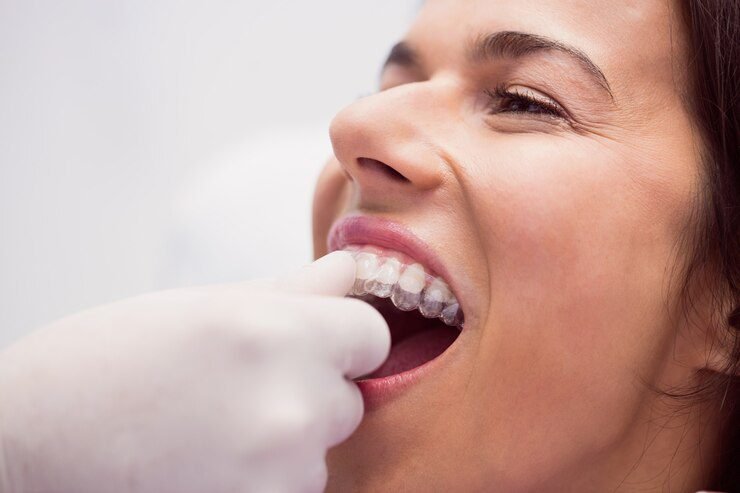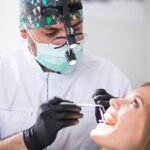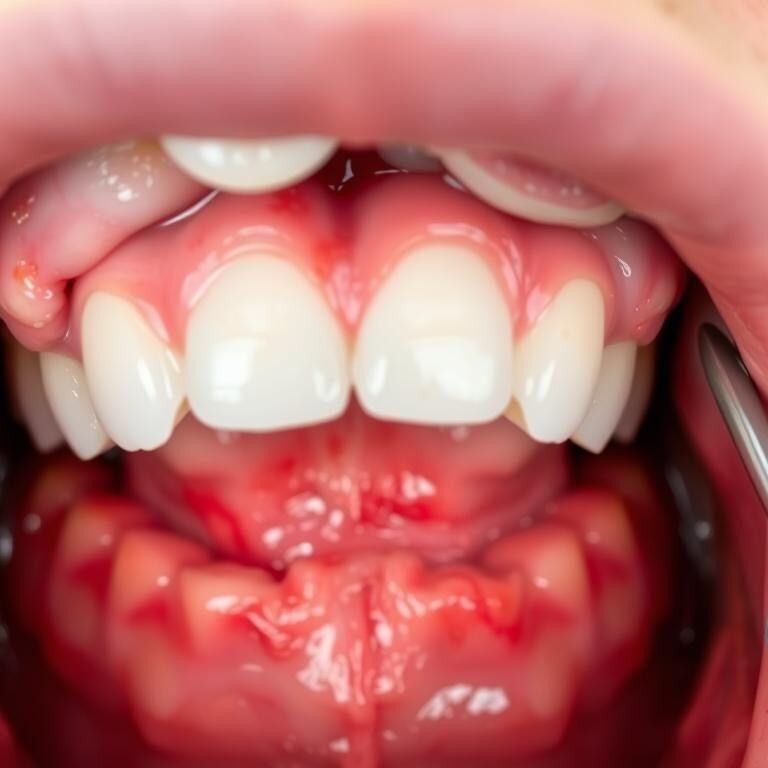Table of Contents
Understanding the Popularity of Direct-to-Consumer Clear Aligners
The popularity of direct-to-consumer clear aligners has been on the rise in recent years, with many individuals opting for this convenient and seemingly cost-effective alternative to traditional orthodontic treatment. One factor that contributes to the appeal of these clear aligners is the convenience they offer. Unlike traditional braces that require frequent visits to the orthodontist for adjustments, clear aligners can be easily managed at home, allowing for greater flexibility and less disruption to daily life.
Additionally, direct-to-consumer clear aligners often boast shorter treatment times compared to traditional braces. This is due to the use of advanced technology, such as computer-aided design and 3D printing, which enables the creation of personalized aligners tailored to each individual’s unique dental needs. The ability to achieve a straighter smile in a relatively shorter period of time is certainly a compelling factor for many seeking orthodontic treatment.
Furthermore, the cost-effectiveness of direct-to-consumer clear aligners is another aspect that draws people towards this treatment option. Traditional braces can be quite expensive, especially when factoring in the cost of frequent visits to the orthodontist for adjustments. In contrast, direct-to-consumer clear aligners often come at a lower price point, making them a more affordable solution for those looking to improve their smile without breaking the bank.
With these benefits in mind, it is not surprising that direct-to-consumer clear aligners have gained significant popularity among individuals seeking orthodontic treatment. However, it is important to weigh the pros and cons and consider individual circumstances before making a decision. In the subsequent sections, we will delve deeper into the potential risks and limitations, as well as the vital role of professional dental assessment and personalized treatment plans, to provide readers with a comprehensive understanding of clear aligner treatment.
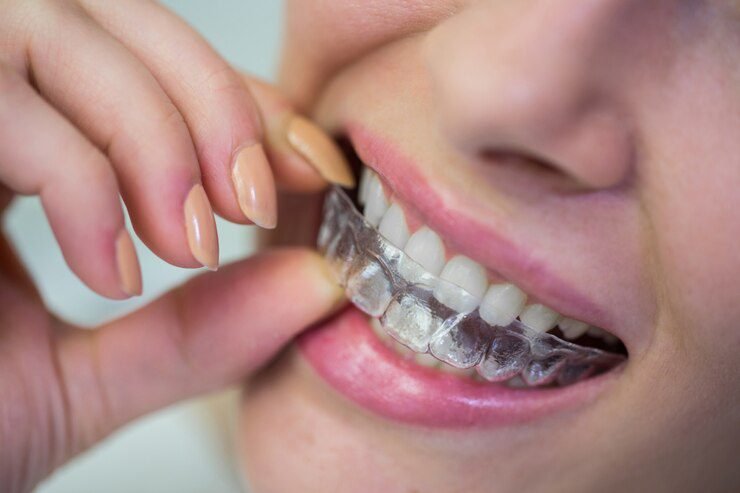
The Importance of a Professional Dental Assessment
A professional dental assessment is an essential step in any orthodontic treatment plan. It allows for a thorough evaluation of the patient’s oral health, alignment issues, and underlying dental conditions. During this assessment, the dentist will examine the teeth, gums, and jaw structure to determine the suitability of clear aligners as a treatment option.
One of the key benefits of a professional dental assessment is the ability to identify any potential risks or limitations of clear aligner treatment. While direct-to-consumer clear aligners may seem convenient, they may not be suitable for everyone. A professional assessment ensures that the treatment plan is tailored to the individual’s specific needs, taking into account factors such as tooth movement capabilities, bite alignment, and the presence of any pre-existing dental conditions.
Moreover, the expertise of a dentist plays a crucial role in ensuring the success and safety of orthodontic treatment. Dentists are trained professionals who have a deep understanding of oral health and the mechanics of tooth movement. With their knowledge and experience, they can accurately diagnose and address any underlying dental issues before initiating clear aligner treatment. This comprehensive approach ensures that the patient receives the necessary care and support throughout the treatment journey, leading to optimal results and long-term oral health.
The Role of a Dentist in Orthodontic Treatment
Orthodontic treatment plays a crucial role in correcting dental alignment issues and improving oral health. When it comes to straightening teeth, a dentist’s role is instrumental in guiding patients through the process and ensuring the best possible outcomes. With their expertise and specialized knowledge, dentists have the necessary skills to assess, diagnose, and develop personalized treatment plans tailored to each patient’s unique needs.
One of the primary responsibilities of a dentist in orthodontic treatment is to conduct a thorough examination of the patient’s dental health. This assessment includes evaluating the alignment of the teeth, the condition of the gums and supporting structures, and any potential underlying dental issues. By examining these aspects, dentists can identify any preexisting conditions that may affect the success of orthodontic treatment and address them before commencing with any corrective procedures. Additionally, dentists can discuss the patient’s expectations, answer any questions or concerns, and provide detailed information about the various treatment options available. This personalized approach ensures that patients are well-informed and feel empowered to make informed decisions about their orthodontic treatment.
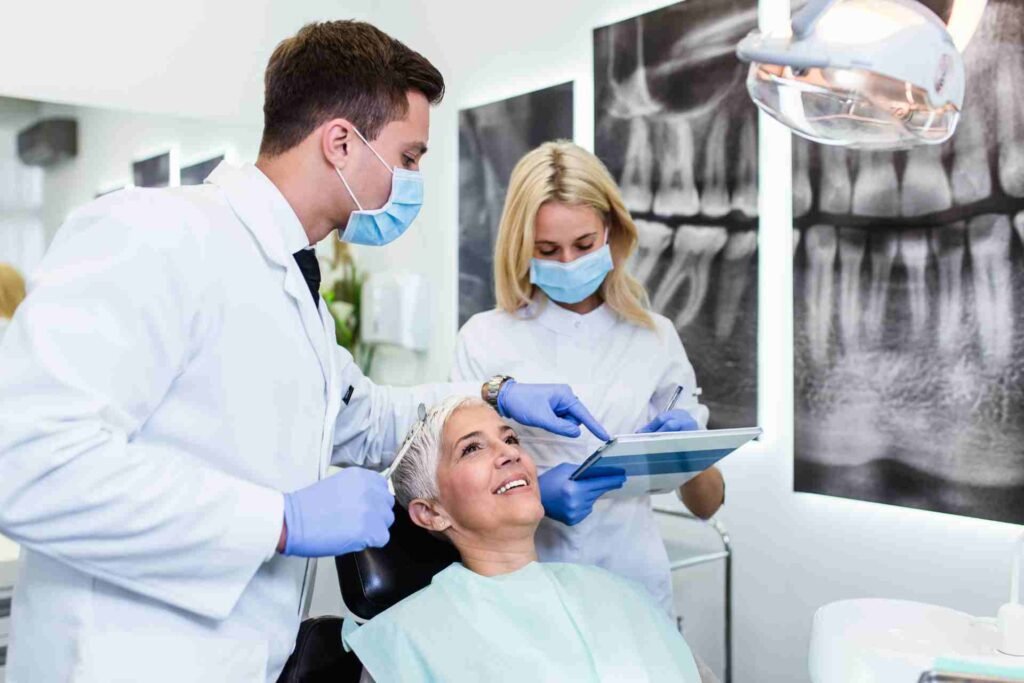
The Potential Risks and Limitations of Direct-to-Consumer Clear Aligners
Direct-to-consumer clear aligners have gained significant popularity in recent years as an alternative to traditional orthodontic treatment. However, it is important to be aware of the potential risks and limitations associated with these products. One of the main concerns is the lack of professional dental assessment and supervision throughout the treatment process.
Unlike traditional orthodontic treatment, direct-to-consumer clear aligners are typically administered without the direct involvement of a dentist. While this may seem convenient, it can pose serious risks to the patient’s oral health. Without a professional dental assessment, underlying dental issues such as cavities, gum disease, or misalignment of the jaw may go unnoticed. These issues may require additional interventions or adjustments to the treatment plan, which can only be addressed by a qualified dentist.
Another limitation of direct-to-consumer clear aligners is the limited scope of treatment they can provide. While they may be effective for minor orthodontic issues, such as slight gaps or crookedness, more complex cases may require the expertise and guidance of a dentist or orthodontist. This is especially important when it comes to bite alignment and occlusion, as improper treatment can lead to long-term complications and additional dental problems.
It is crucial for individuals considering direct-to-consumer clear aligners to understand the potential risks and limitations associated with these products. Seeking the professional guidance and expertise of a dentist can ensure a comprehensive assessment of oral health, personalized treatment plans, and ongoing monitoring throughout the treatment process. By prioritizing your oral health and seeking professional orthodontic care, you can achieve optimal results and minimize any potential risks or limitations.
Why Dentists Recommend In-Person Consultations for Clear Aligner Treatment
In the world of orthodontic treatment, clear aligners have gained immense popularity for their convenience and aesthetic appeal. However, many dentists still strongly recommend in-person consultations for patients considering clear aligner treatment. This is because a thorough assessment of the patient’s dental health and orthodontic needs can only be accurately determined through an in-person examination.
During an in-person consultation, dentists can evaluate the patient’s oral health, including the condition of their teeth, gums, and jaw. This comprehensive assessment is crucial in determining whether the patient is a suitable candidate for clear aligner treatment. Dentists can identify any underlying dental issues that may have been overlooked, such as gum disease, tooth decay, or bite problems, which could impact the success of the treatment. Additionally, dentists can also assess the patient’s jaw alignment and evaluate if any additional orthodontic treatment, such as a jaw repositioning appliance, is necessary for optimal results.
Furthermore, in-person consultations allow dentists to establish a personal rapport with their patients. They can explain the treatment process, address any concerns or questions, and set realistic expectations. This personalized approach ensures that the patient fully understands the treatment’s benefits, limitations, and potential risks, enabling them to make an informed decision about their orthodontic journey.
While remote consultations and at-home impression kits may seem convenient, dentists stress the importance of in-person consultations to ensure the best possible outcome for patients pursuing clear aligner treatment. Only through an in-depth examination and personalized assessment can dentists develop a treatment plan tailored to the patient’s specific needs, ultimately leading to successful orthodontic outcomes.
The Benefits of Personalized Treatment Plans
Personalized treatment plans are a crucial aspect of clear aligner treatment. By tailoring the orthodontic plan to each individual’s specific needs and goals, dental professionals can optimize the effectiveness of the treatment and ensure the best possible outcome for their patients.
One of the key benefits of personalized treatment plans is the ability to address unique dental issues. While some individuals may require minor adjustments to achieve the desired results, others may have more complex cases that require additional attention. With a personalized plan, dentists can consider factors such as tooth movement, bite alignment, and overall oral health to create a treatment strategy that is tailored to the patient’s specific needs. This individualized approach ensures that all aspects of the orthodontic treatment are taken into account, leading to improved outcomes and patient satisfaction.
| Benefit | Explanation |
|---|---|
| Enhanced Patient Care | Personalized plans cater to the specific needs of each patient, ensuring comprehensive treatment. |
| Improved Treatment Outcomes | Tailored plans address individual oral health issues effectively, resulting in better outcomes. |
| Increased Patient Satisfaction | Patients feel valued when treatments are customized to their needs, leading to higher satisfaction. |
| Better Oral Health Management | Personalized plans allow for targeted interventions, enabling better management of oral health issues. |
| Efficient Resource Utilization | Resources such as time and materials are used efficiently as treatments are focused and streamlined. |
| Long-term Cost Savings | Preventive measures and targeted treatments in personalized plans can lead to reduced long-term costs. |
| Patient Education | Personalized plans involve educating patients about their specific oral health needs, promoting awareness and proactive care. |
The Importance of Accurate Dental Impressions
Accurate dental impressions play a crucial role in the success of any orthodontic treatment, and this holds true for clear aligner therapy as well. When it comes to aligning teeth using clear aligners, precision is paramount in achieving the desired results.
The first step in the clear aligner treatment process involves taking dental impressions. These impressions provide an exact replica of your teeth and jaws, allowing the orthodontist or dentist to create a personalized treatment plan. By capturing the unique contours and dimensions of your dental arches, accurate dental impressions ensure that the aligners fit snugly and comfortably, maximizing their effectiveness in moving teeth.
Accurate dental impressions not only ensure a proper fit but also enable the orthodontist to optimize the treatment plan based on the specific needs of each patient. This customized approach allows for precise tooth movements and encourages better alignment outcomes. With clear aligners, the treatment success heavily relies on sequential aligner trays that gradually shift the teeth. By having precise dental impressions, the aligners can be made with high accuracy, minimizing the risk of misalignment or compromise in the treatment process.
In conclusion, accurate dental impressions serve as the foundation for a successful clear aligner treatment. They provide orthodontists with valuable information to tailor treatment plans and ensure the aligners fit comfortably and work effectively. With precision in dental impressions, patients can expect better alignment outcomes and a more satisfying orthodontic experience overall.
The Role of Regular Dental Check-ups during Orthodontic Treatment
Regular dental check-ups play a crucial role in ensuring the success of orthodontic treatment. These check-ups allow the dentist to closely monitor the progress of the treatment and make necessary adjustments to ensure optimal results.
During these check-ups, the dentist will examine the patient’s teeth and gums, looking for any signs of complications or issues that may arise during orthodontic treatment. This includes checking for cavities, gum inflammation, or any other oral health problems that could hinder the progress of the treatment or affect the final outcome.
Additionally, regular dental check-ups also provide an opportunity for patients to receive professional guidance and advice on oral hygiene practices during their orthodontic treatment. The dentist can offer tips and techniques for effective brushing and flossing, as well as recommend specific oral care products that are suitable for patients with braces or clear aligners.
By attending regular dental check-ups, patients can ensure that their orthodontic treatment is progressing smoothly and that any potential problems are identified and addressed early on. This not only helps to achieve the desired results but also promotes overall oral health throughout the treatment process. So, it is important to prioritize regular dental check-ups as part of your orthodontic journey.
The Potential Complications of DIY Teeth Straightening
DIY teeth straightening has become increasingly popular in recent years, with many individuals seeking a quick and affordable alternative to traditional orthodontic treatment. However, it is important to understand the potential complications that can arise from attempting to straighten your teeth without professional guidance.
One of the main concerns with DIY teeth straightening is the improper alignment of the teeth. Without the expertise of a dentist or orthodontist, it can be difficult to accurately assess the current position of your teeth and determine the most effective method of correction. As a result, DIY treatments may only address cosmetic concerns without addressing underlying issues such as malocclusion or bite problems.
Moreover, without proper supervision, DIY teeth straightening can lead to unintended consequences. Moving teeth too quickly or applying excessive force can result in tooth sensitivity, gum recession, and even tooth loss. Additionally, individuals may not properly consider the impact of their treatment on their overall dental health, potentially exacerbating existing oral health issues. It is crucial to remember that teeth straightening is a complex process that requires careful examination and monitoring by a dental professional.
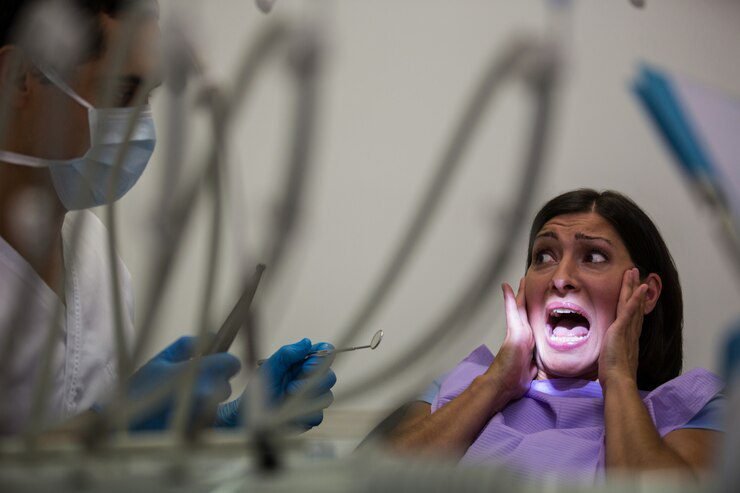
The Effectiveness of Professional Orthodontic Monitoring
Professional orthodontic monitoring is a vital aspect of successful orthodontic treatment. Regular check-ups with a qualified orthodontist allow for the careful assessment and adjustment of aligners or braces to ensure treatment progresses as planned. This close monitoring, typically scheduled every 4-8 weeks, allows the orthodontist to evaluate the progress made, identify any issues or concerns, and make necessary modifications to the treatment plan.
During these monitoring appointments, the orthodontist will assess factors such as tooth movement, bite alignment, and overall oral health. By closely examining the patient’s progress and making adjustments as needed, the orthodontist can optimize the effectiveness of the treatment. This personalized approach ensures that the aligners or braces are working as intended, ultimately leading to the desired outcome of a beautiful, straight smile.
Furthermore, professional orthodontic monitoring allows for early detection and management of any complications that may arise during treatment. Although rare, issues such as tooth root resorption or gum inflammation can occur. With regular check-ups, the orthodontist can promptly identify these problems and take the necessary steps to address them, minimizing potential risks and maximizing the overall success of the treatment.
In conclusion, professional orthodontic monitoring plays a crucial role in the effectiveness and safety of orthodontic treatment. Regular check-ups with an experienced orthodontist allow for personalized evaluation, adjustment, and addressing of any complications, ensuring that the treatment progresses smoothly and leads to the desired results. Patients undergoing orthodontic treatment should prioritize the importance of professional monitoring to achieve optimal oral health and a confident smile.
The Long-term Results of Direct-to-Consumer Clear Aligners
Direct-to-consumer clear aligners have gained immense popularity in recent years as a convenient and seemingly cost-effective solution for achieving straighter teeth. However, when considering the long-term results of these aligners, it is crucial to approach the topic with caution. While some individuals may experience satisfactory outcomes with direct-to-consumer aligners, it is important to note that these aligners are not designed to address complex orthodontic issues.
Orthodontic treatment requires careful assessment, planning, and monitoring to ensure optimal results and long-term stability. A professional dentist, with their extensive training and expertise, plays a crucial role in guiding patients through this process. By conducting a thorough examination of the patient’s oral health, including an assessment of bite alignment, jaw function, and any underlying dental issues, a dentist can determine the most appropriate treatment approach.
Without the guidance of a professional dentist, individuals may risk overlooking certain dental conditions that can impact the effectiveness and long-term success of clear aligner treatment. Moreover, direct-to-consumer aligners lack the personalized treatment plans that dentists provide, tailored to each individual’s unique needs. The absence of regular dental check-ups and monitoring can lead to complications and suboptimal results. For these reasons, it is essential to consider the potential limitations and risks associated with direct-to-consumer clear aligners when evaluating their long-term outcomes.
The Importance of Proper Bite Alignment in Orthodontic Treatment
Proper bite alignment plays a crucial role in orthodontic treatment. Not only does it contribute to a beautiful and confident smile, but it also ensures optimal functionality and long-term oral health. When the upper and lower teeth fit together correctly, they distribute the forces of chewing evenly, preventing excessive wear, and reducing the risk of jaw joint problems.
Beyond aesthetics, proper bite alignment can have a significant impact on a person’s overall well-being. Misaligned teeth can lead to difficulties in chewing, speaking, and even breathing. They can increase the likelihood of tooth decay, gum disease, and jaw discomfort. By addressing and correcting bite alignment issues, orthodontic treatment goes beyond straightening teeth. It aims to restore harmony to the entire oral cavity and promote a healthier bite for years to come.
| Aspect | Importance |
|---|---|
| Functionality | Proper bite alignment ensures efficient chewing, biting, and speaking abilities. |
| Dental Health | Correct bite alignment reduces the risk of dental issues like tooth decay, gum disease, and TMJ. |
| Jaw Alignment | Helps in aligning the jaw properly, preventing jaw pain and discomfort. |
| Facial Aesthetics | Proper alignment enhances facial symmetry and aesthetics, boosting self-confidence. |
| Long-term Stability | Improves the long-term stability of teeth, preventing relapse and future orthodontic treatments. |
| Oral Comfort | Reduces discomfort associated with misaligned bites, such as jaw popping, clicking, or pain. |
| Prevention of Wear | Minimizes wear and tear on teeth, preventing premature erosion and damage. |
| Overall Well-being | Contributes to overall well-being by promoting proper oral function and comfort. |
The Potential Consequences of Ignoring Underlying Dental Issues
Ignoring underlying dental issues can have serious consequences on your oral health. Dental problems such as cavities, gum disease, or tooth decay may seem minor at first, but if left untreated, they can lead to more significant issues down the line. For instance, untreated tooth decay can progress to a dental abscess, causing severe pain, infection, and even tooth loss.
Furthermore, underlying dental issues can also impact the success of orthodontic treatment, particularly with clear aligners. If you have an untreated cavity or gum disease, the aligners may not fit properly, compromising their effectiveness. Additionally, if you have misalignment due to a jaw or bite issue, simply straightening your teeth may not address the root cause. It is crucial to address and treat any underlying dental issues before undergoing clear aligner treatment to ensure the best possible outcome for your oral health.
The Role of Dentists in Ensuring Patient Safety during Clear Aligner Treatment
Dentists play a crucial role in ensuring the safety and success of clear aligner treatment. While direct-to-consumer clear aligners may seem convenient and cost-effective, it is important to remember that they are not a “one-size-fits-all” solution. Dentists are trained professionals who possess the expertise and knowledge to properly evaluate each individual’s oral health and determine if clear aligners are a suitable treatment option.
During an in-person consultation, dentists thoroughly examine patients’ teeth, gums, and overall oral health. They take into consideration various factors such as existing dental issues, bone density, and jaw alignment, which may impact the effectiveness and safety of clear aligners. By assessing these factors, dentists can identify any underlying dental issues that need to be addressed before starting aligner treatment. This ensures that patients are not only achieving a straighter smile but also maintaining optimal oral health throughout the process.
In addition to the initial assessment, dentists closely monitor patients’ progress during clear aligner treatment. Regular check-ups allow dentists to track the movement of teeth, identify any potential complications or malocclusions, and make necessary adjustments to the treatment plan. This personalized approach helps to minimize the risk of adverse effects and increases the likelihood of achieving desired results. Dentists’ expertise and vigilant oversight contribute significantly to ensuring the safety and effectiveness of clear aligner treatment, ultimately leading to healthier smiles and greater patient satisfaction.
The Need for Individualized Treatment Approaches
Individualized treatment approaches are of utmost importance when it comes to clear aligner treatment. Each patient has unique dental needs and requirements, which necessitate personalized treatment plans. By tailoring the treatment approach to the individual, dentists can effectively address specific concerns and achieve optimal results.
One significant aspect of individualized treatment is the consideration of underlying dental issues. Before undergoing clear aligner treatment, a thorough dental assessment by a professional is crucial. This assessment helps dentists identify any potential problems, such as gum disease, cavities, or bone loss, which may need to be addressed before orthodontic treatment. By addressing these underlying issues, dentists can ensure better oral health and prevent complications during the realignment process. Thus, individualized treatment approaches not only focus on straightening teeth but also prioritize overall dental well-being.
Conclusion: The Value of Professional Guidance in Clear Aligner Treatment
The value of professional guidance in clear aligner treatment cannot be overstated. While direct-to-consumer clear aligners may seem like a convenient and cost-effective option, it is crucial to recognize the importance of a dentist’s expertise in this process. Dentists have extensive knowledge and training in orthodontic treatment, and they play a critical role in ensuring successful and safe outcomes for patients.
One of the key benefits of seeking professional guidance is the ability to receive personalized treatment plans. Dentists thoroughly evaluate each patient’s dental condition, taking into account factors such as misalignment severity, jaw structure, and any underlying dental issues. This individualized approach allows for the development of a tailored plan that addresses the specific needs and goals of the patient. Without this professional assessment, individuals risk receiving a one-size-fits-all treatment that may not effectively address their unique dental situation.
Are direct-to-consumer clear aligners as effective as professional clear aligner treatment?
While direct-to-consumer clear aligners may be convenient, professional clear aligner treatment with the guidance of a dentist is generally considered more effective and safer for achieving optimal results.
What are the potential risks of using direct-to-consumer clear aligners?
Direct-to-consumer clear aligners may pose risks such as improper bite alignment, tooth movement complications, and potential damage to teeth and gums if used without professional guidance.
Can I straighten my teeth without visiting a dentist?
It is highly recommended to visit a dentist for teeth straightening treatment, as they can assess your specific oral health needs, identify any underlying dental issues, and provide personalized treatment plans for the best results.
How often should I have dental check-ups during orthodontic treatment?
Regular dental check-ups are crucial during orthodontic treatment, as your dentist can monitor your progress, make necessary adjustments, and ensure that your teeth and gums remain healthy throughout the process.
What are the potential consequences of ignoring underlying dental issues during clear aligner treatment?
Ignoring underlying dental issues during clear aligner treatment can lead to complications, such as worsening of dental problems, compromised treatment results, and potential damage to the teeth and gums.
How do dentists ensure patient safety during clear aligner treatment?
Dentists play a vital role in ensuring patient safety during clear aligner treatment by conducting thorough assessments, providing personalized treatment plans, monitoring progress, and addressing any issues or complications that may arise.
Why is it important to have individualized treatment approaches for clear aligner treatment?
Individualized treatment approaches are crucial in clear aligner treatment to address each patient’s unique dental needs, ensure proper bite alignment, and achieve long-lasting results.
Can direct-to-consumer clear aligners provide long-term results?
Direct-to-consumer clear aligners may provide temporary results, but long-term results are more reliably achieved through professional clear aligner treatment, which takes into account proper bite alignment and overall dental health.
How do professional orthodontic monitoring services enhance the effectiveness of clear aligner treatment?
Professional orthodontic monitoring ensures that clear aligner treatment progresses as planned, allowing dentists to make necessary adjustments, track the patient’s progress, and address any issues that may arise for optimal treatment effectiveness.
What is the significance of proper bite alignment in orthodontic treatment?
Proper bite alignment is crucial in orthodontic treatment as it ensures the harmonious function of the teeth, jaw, and muscles, promoting long-term oral health and preventing potential complications.
Can I use direct-to-consumer clear aligners if I have dental issues?
It is important to address any underlying dental issues before considering clear aligner treatment. Consulting with a dentist will help identify and address these issues to ensure safe and effective treatment outcomes.

